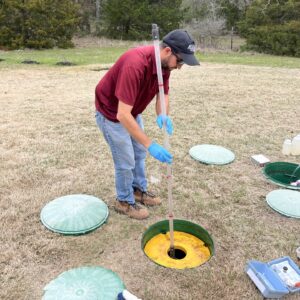Cheilosia corydon (Harris)
[Diptera: Syrphidae]
Scientific name status: previously referred to as C. grossa (Fallén).
Other common names: Thistle crown fly
Biology | History | Status | Management | Weeds | Literature | Links
Eggs are laid on young thistle leaves and shoots, typically in the spring about mid March to April. Eggs are laid singly or in small clusters of three or four and hatch in 3-4 days. Young larvae mine in the young shoots. Older larvae feed inside of the plant stem and tunnel up or down in the stem. The plant is damaged by the feeding and flower and seed production is disturbed. Multiple larvae may infest a single stem. Pupation occurs in the root probably in the springtime. Adult flies are black with yellow hairs and are over ½ inch long.
This fly is native throughout Europe. It was originally imported from Italy and released in Maryland in 1990. Only a single pupa has been recovered from a research site in Maryland. It has not been recovered from research or release sites in Oregon, Washington, or Texas.
In 1995, 135 flies were released at Hereford in Deaf Smith County. Additional releases were made in Gillespie and Menard Counties in Texas. No establishment has been documented in Texas.
Adults could be collected with a sweep net in early spring. Larvae or pupae could be collected in stems in the fall of the year.
Musk thistle, Carduus nutans complex; Italian thistle, Carduus pycnocephalus; and plumeless thistle, carduus accentthoides. Cirsium crassicaule is a marginally suitable host.
Rees, N. M., J. L. Littlefield, W. I. Bruckart, and A. Baudoin. 1995. Cheilosia corydon. In Biological Control of Weeds in the West. Western Society of Weed Science.




